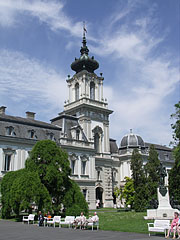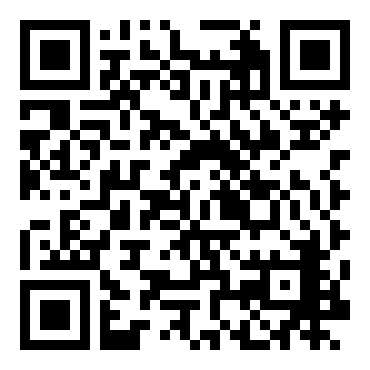(Optimizirana za uređaje s malim ekranom)
Festetics Palace - Keszthely, Mađarska
Kada kliknete:
Kliknite na slike!
-

The west side of the baroque Festetics Palace
The palace was built between 1745-1880, architects: Gustav Haas and Maximilian Paschkisch
Datum fotografiranje: 22. 5. 2005.2005
Izradio: Robert Németh
Model fotoaparata: Konica Minolta Dimage A200
Keszthely, Mađarska
-

The north wing of the Festetics Palace, there is a fountain in the park in front of it
Datum fotografiranje: 22. 5. 2005.2005
Izradio: Robert Németh
Model fotoaparata: Konica Minolta Dimage A200
Keszthely, Mađarska
-

The Carriage Museum or Coach Museum in the former stable and carriage house (also called remise or coach house)
It was built sometime between 1883-1887.
Datum fotografiranje: 22. 5. 2005.2005
Izradio: Robert Németh
Model fotoaparata: Konica Minolta Dimage A200
Keszthely, Mađarska
-

The palace garden with a small lake or pond, the 8-hectare-area park is a nature reserve, part of the Balaton Uplands National Park ("Balaton-felvidéki Nemzeti Park")
Datum fotografiranje: 22. 5. 2005.2005
Izradio: Robert Németh
Model fotoaparata: Konica Minolta Dimage A200
Keszthely, Mađarska
-

Carriage Museum of Keszthely, Hungarian bride coach from around 1770
Datum fotografiranje: 22. 5. 2005.2005
Izradio: Robert Németh
Model fotoaparata: Konica Minolta Dimage A200
Keszthely, Mađarska
-

The wonderful baroque wrought-iron gate of the park of the Festetics Palace
It was made in 1887, work of Antal Hencz master builder, Máté Polacsek stonemason and Lajos Marton locksmith.
Datum fotografiranje: 22. 5. 2005.2005
Izradio: Robert Németh
Model fotoaparata: Konica Minolta Dimage A200
Keszthely, Mađarska
-

The garden of the baroque Festetics Palace with a fountain
Datum fotografiranje: 22. 5. 2005.2005
Izradio: Robert Németh
Model fotoaparata: Konica Minolta Dimage A200
Keszthely, Mađarska
-

The southern side of the Festetics Palace of Keszthely
Datum fotografiranje: 22. 5. 2005.2005
Izradio: Robert Németh
Model fotoaparata: Konica Minolta Dimage A200
Keszthely, Mađarska
-

The tower of the Festetics Palace of Keszthely
Datum fotografiranje: 22. 5. 2005.2005
Izradio: Robert Németh
Model fotoaparata: Konica Minolta Dimage A200
Keszthely, Mađarska
-

Statue of Count György Festetics in the palace garden
Created by Lajos Lukácsy in 1902, originally it stood on the Fő Square or main sqaure, it was moved to here next to the palace in 1967.
Datum fotografiranje: 22. 5. 2005.2005
Izradio: Robert Németh
Model fotoaparata: Konica Minolta Dimage A200
Keszthely, Mađarska
-
Ornate iron lamp post
Datum fotografiranje: 22. 5. 2005.2005
Izradio: Robert Németh
Model fotoaparata: Konica Minolta Dimage A200
Keszthely, Mađarska
Ornate iron lamp post - Keszthely, Mađarska -
The Festetics Palace, including the Helikon Palace Museum
Datum fotografiranje: 22. 5. 2005.2005
Izradio: Robert Németh
Model fotoaparata: Konica Minolta Dimage A200
Keszthely, Mađarska
The Festetics Palace, including the Helikon Palace Museum - Keszthely, Mađarska -
Palace park
Datum fotografiranje: 22. 5. 2005.2005
Izradio: Robert Németh
Model fotoaparata: Konica Minolta Dimage A200
Keszthely, Mađarska
Palace park - Keszthely, Mađarska -
Giant old oak tree in the palace park
Datum fotografiranje: 22. 5. 2005.2005
Izradio: Robert Németh
Model fotoaparata: Konica Minolta Dimage A200
Keszthely, Mađarska
Giant old oak tree in the palace park - Keszthely, Mađarska -
Old Hungarian coach in the Carriage Museum
Datum fotografiranje: 22. 5. 2005.2005
Izradio: Robert Németh
Model fotoaparata: Konica Minolta Dimage A200
Keszthely, Mađarska
Old Hungarian coach in the Carriage Museum - Keszthely, Mađarska -
Carriage Museum of Keszthely (or Coach Museum, in Hungarian "Hintómúzeum")
Datum fotografiranje: 22. 5. 2005.2005
Izradio: Robert Németh
Model fotoaparata: Konica Minolta Dimage A200
Keszthely, Mađarska
Carriage Museum of Keszthely (or Coach Museum, in Hungarian "Hintómúzeum") - Keszthely, Mađarska -
Carriage Museum of Keszthely, Hungarian park coach from the early-18th century
Datum fotografiranje: 22. 5. 2005.2005
Izradio: Robert Németh
Model fotoaparata: Konica Minolta Dimage A200
Keszthely, Mađarska
Carriage Museum of Keszthely, Hungarian park coach from the early-18th century - Keszthely, Mađarska -
Old toys, a small cart and a small wheeled wooden horse in the Carriage Museum of Keszthely
Datum fotografiranje: 22. 5. 2005.2005
Izradio: Robert Németh
Model fotoaparata: Konica Minolta Dimage A200
Keszthely, Mađarska
Old toys, a small cart and a small wheeled wooden horse in the Carriage Museum of Keszthely - Keszthely, Mađarska -
A so-called "cavalier coach" in the Carriage Museum
Datum fotografiranje: 22. 5. 2005.2005
Izradio: Robert Németh
Model fotoaparata: Konica Minolta Dimage A200
Keszthely, Mađarska
A so-called "cavalier coach" in the Carriage Museum - Keszthely, Mađarska -
Coach Museum or Carriage Museum of Keszthely
Datum fotografiranje: 22. 5. 2005.2005
Izradio: Robert Németh
Model fotoaparata: Konica Minolta Dimage A200
Keszthely, Mađarska
Coach Museum or Carriage Museum of Keszthely - Keszthely, Mađarska -
Carriage Museum (also known as Cart and Coach Museum of Keszthely)
Datum fotografiranje: 22. 5. 2005.2005
Izradio: Robert Németh
Model fotoaparata: Konica Minolta Dimage A200
Keszthely, Mađarska
Carriage Museum (also known as Cart and Coach Museum of Keszthely) - Keszthely, Mađarska -
Old mail coaches in the Carriage Museum
Datum fotografiranje: 22. 5. 2005.2005
Izradio: Robert Németh
Model fotoaparata: Konica Minolta Dimage A200
Keszthely, Mađarska
Old mail coaches in the Carriage Museum - Keszthely, Mađarska -
A brief mail coach history on an information board in the Carriage Museum
Datum fotografiranje: 22. 5. 2005.2005
Izradio: Robert Németh
Model fotoaparata: Konica Minolta Dimage A200
Keszthely, Mađarska
A brief mail coach history on an information board in the Carriage Museum - Keszthely, Mađarska -
Details of a horse sleigh in the Carriage Museum
Datum fotografiranje: 22. 5. 2005.2005
Izradio: Robert Németh
Model fotoaparata: Konica Minolta Dimage A200
Keszthely, Mađarska
Details of a horse sleigh in the Carriage Museum - Keszthely, Mađarska -
Carriages in the exhibition of the Carriage Museum
Datum fotografiranje: 22. 5. 2005.2005
Izradio: Robert Németh
Model fotoaparata: Konica Minolta Dimage A200
Keszthely, Mađarska
Carriages in the exhibition of the Carriage Museum - Keszthely, Mađarska -
Drinking fountain with lion sculptures in the palace park
The lion figures were sculpted by Joseph Klieber in 1822.
Datum fotografiranje: 22. 5. 2005.2005
Izradio: Robert Németh
Model fotoaparata: Konica Minolta Dimage A200
Keszthely, Mađarska
Drinking fountain with lion sculptures in the palace park - Keszthely, Mađarska -
Triangular tympanum on the neo-classical well-house of the drinking fountain with the lion sculptures in the palace park
Datum fotografiranje: 22. 5. 2005.2005
Izradio: Robert Németh
Model fotoaparata: Konica Minolta Dimage A200
Keszthely, Mađarska
Triangular tympanum on the neo-classical well-house of the drinking fountain with the lion sculptures in the palace park - Keszthely, Mađarska -
Park with pine trees
Datum fotografiranje: 22. 5. 2005.2005
Izradio: Robert Németh
Model fotoaparata: Konica Minolta Dimage A200
Keszthely, Mađarska
Park with pine trees - Keszthely, Mađarska -
A common wood pigeon couple in the park
These birds can be seen almost always in couples.
Datum fotografiranje: 22. 5. 2005.2005
Izradio: Robert Németh
Model fotoaparata: Konica Minolta Dimage A200
Keszthely, Mađarska
A common wood pigeon couple in the park - Keszthely, Mađarska -
Common wood pigeon (Columba palumbus)
Datum fotografiranje: 22. 5. 2005.2005
Izradio: Robert Németh
Model fotoaparata: Konica Minolta Dimage A200
Keszthely, Mađarska
Common wood pigeon (Columba palumbus) - Keszthely, Mađarska -
Wagtail songbird in the grass
Datum fotografiranje: 22. 5. 2005.2005
Izradio: Robert Németh
Model fotoaparata: Konica Minolta Dimage A200
Keszthely, Mađarska
Wagtail songbird in the grass - Keszthely, Mađarska -
The Festetics Palace of Keszthely (Helikon Palace Museum)
Datum fotografiranje: 22. 5. 2005.2005
Izradio: Robert Németh
Model fotoaparata: Konica Minolta Dimage A200
Keszthely, Mađarska
The Festetics Palace of Keszthely (Helikon Palace Museum) - Keszthely, Mađarska -
The baroque style Festetics Palace of Keszthely
Datum fotografiranje: 22. 5. 2005.2005
Izradio: Robert Németh
Model fotoaparata: Konica Minolta Dimage A200
Keszthely, Mađarska
The baroque style Festetics Palace of Keszthely - Keszthely, Mađarska
Kliknite na slike!
Karakteristike, osobine
Položaj:
GPS koordinate: Širina 46°46'15", Dužina 17°14'29" (N46 46.25 - E17 14.48)
Informacije, kratke priče, zanimljive činjenice
 Carriage Museum of Keszthely, Hungarian bride coach from around 1770
Carriage Museum of Keszthely, Hungarian bride coach from around 1770
In the context of horse-drawn vehicles (e.g. carriages and wagons) the English "coach" word is derived from the Hungarian word "kocsi" that means: "of Kocs", which is a village in Hungary. At the age of King Matthias in the 15th century the settlement was already an important post town and mail coach station between Budapest (Buda and Pest) and Vienna, Austria. At that time a new light and fast carriage was developed in Hungary, which spread very quickly across Europe, thanks to its obvious benefits and among others to the nephew of Queen Beatrix. The new vehicle was names after Kocs settlement. There was a special suspension among the innovations and advantages, it helped to travel more comfortable. In addition, due to the better rolling of the wheels the fast vehicle could carry even eight passengers with a single horse, and even for longer distance.
Today still the various versions of the Hungarian "kocsi" word is used for the light carriages in many European languages: in English "coach", in German "Kutsche", in Spanish, Portuguese and French "coche", in Catalan "cotxe", in Italian "cocchio", in Dutch "koets", in Flemish "goetse", in Polish "kocz", in Czech "kočár", in Slovak "koč" or "kočiar", in Ukrainian "коч", in Croatian and Slovenian "kočija", in Serbian "кочије", in Swedish "kusk", and in Kurdish "koçk". Even more interesting that in Asia Minor and in the Caucasus the light horse-drawn wagon is simply called "madjar", so practically "Magyar" or "Hungarian".
Keszthely - Više foto galerije:
Vi svibanj također biti zainteresirani za (Povezane stranice):
Odredišta u turističkom vodiču:
Keszthely (100 slike + 8 panoramske slike)
Zala megye (county) (354 slike + 12 panoramske slike)
Balaton Uplands National Park (Balaton-felvidék) (440 slike + 15 panoramske slike)
Blatno jezero (Balaton) (1 597 slike + 35 panoramske slike)
Mađarska (27 287 slike + 163 panoramske slike)
I također:
(u ovdje: Balaton Uplands National Park i Zala megye)
Balaton Uplands (Balaton-felvidék) (123 slike + 5 panoramske slike)
Kis-Balaton
Kis-Balaton
Tihany (106 slike + 1 panoramske slike)
Balatongyörök (8 slike)
Kehidakustány (31 slike)
Hévíz (150 slike + 1 panoramske slike)
Hévíz (150 slike + 1 panoramske slike)
Zalakaros (43 slike + 3 panoramske slike)
Zalaegerszeg (22 slike)
Svaka panoramska fotografija ovdje:
Keszthely (8 slike)
Zala megye (county) (12 slike)
Balaton Uplands National Park (Balaton-felvidék) (15 slike)
Blatno jezero (Balaton) (35 slike)
Mađarska (163 slike)
Europa (165 slike)
Svaka normalna slika ovdje:
Keszthely (100 slike / 3 galerije)
Zala megye (county) (354 slike / 9 galerije)
Balaton Uplands National Park (Balaton-felvidék) (440 slike / 13 galerije)
Blatno jezero (Balaton) (1 597 slike / 35 galerije)
Mađarska (27 287 slike / 462 galerije)
Europa (30 494 slike / 523 galerije)
https://www.panadea.com/hr/guidebook/keszthely/photos/gal-002

Dodaj u Favorite Dodaj u Favorite
Podijelite sa svojim prijateljima!
itd
Sva prava pridržana
- ©2010-2022
Neuronit Creative Studio - Mogyoród / Budimpešta / Mađarska





